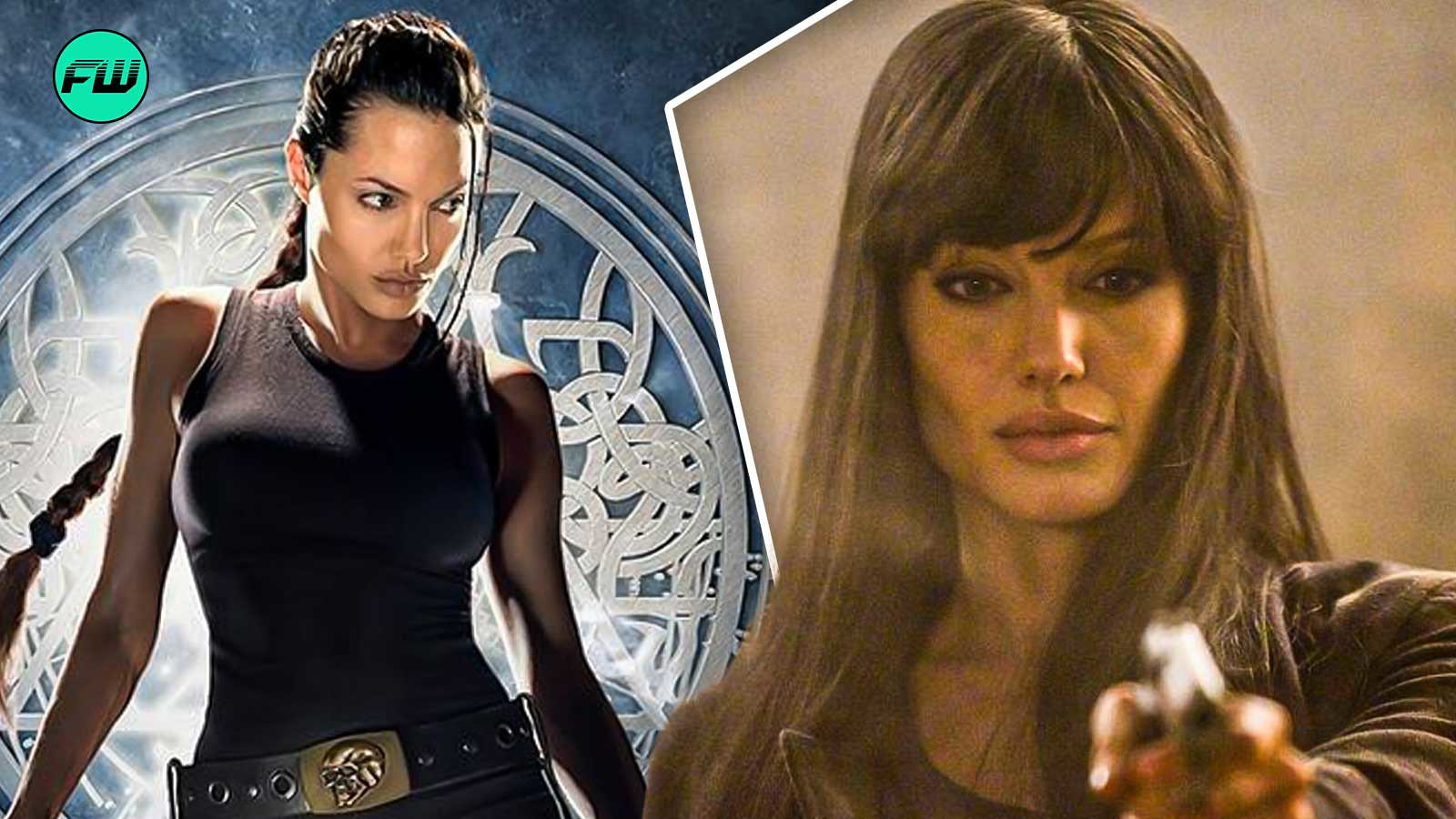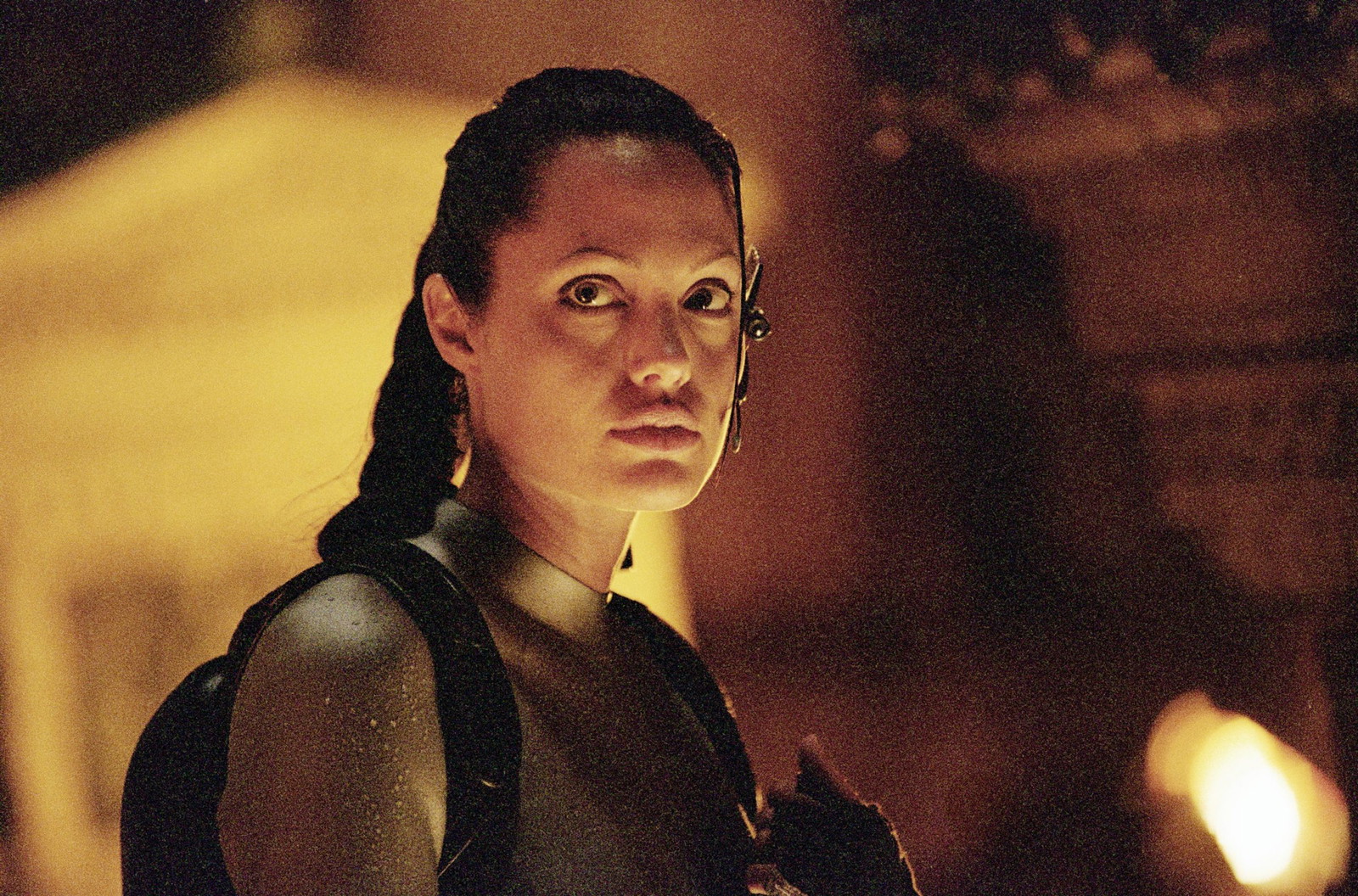
Here's ads banner inside a post
Angelina Jolie on Why She Initially Rejected Tomb Raider and the Three-Month Journey That Led to Her Iconic Role
When Angelina Jolie was first approached to play the iconic role of Lara Croft in Lara Croft: Tomb Raider (2001), the world couldn’t have imagined anyone else filling the shoes of the legendary video game heroine. However, in a surprising revelation, Jolie admitted that she initially rejected the offer to play Croft, despite the immense allure of the role. It wasn’t until she spent three months reflecting on the decision that she finally agreed to take on the part that would go on to make her a global action star and cement her place in cinematic history.
For many, the casting of Jolie as Lara Croft was a match made in Hollywood heaven. The actress had already become known for her talent, beauty, and unique presence, having earned an Academy Award for Girl, Interrupted (1999) and a growing fan base from her diverse roles. But as she revealed in interviews years after the film’s release, there was far more to her decision than just the allure of a major franchise. The three months of self-reflection, uncertainty, and personal growth that ultimately led her to say “yes” to the role played a pivotal role in shaping the character of Lara Croft and Jolie’s own personal and professional journey.
Here's ads banner inside a post
In this detailed account, we will dive deep into the fascinating story of why Angelina Jolie initially turned down the iconic role of Lara Croft, the three-month period of self-discovery that changed her decision, and how Tomb Raider became one of the most defining roles in her career.
The Role That Changed Everything: The Initial Offer
In the early 2000s, the Tomb Raider video game series was at the height of its popularity. The character of Lara Croft was one of the most famous video game protagonists in the world, known for her fearless adventuring, her intelligence, and her physical prowess. As Tomb Raider was being adapted into a film, Hollywood was looking for an actress who could embody these qualities—someone strong, captivating, and capable of carrying an action-packed blockbuster.
The producers of Tomb Raider quickly turned their attention to Angelina Jolie. By that point, she had already proven herself as a formidable talent, having received critical acclaim for roles in films like Girl, Interrupted, Hackers, and Playing by Heart. But what made Jolie stand out as the perfect candidate to bring Lara Croft to life was not only her ability to embody a strong, independent female character but also her natural beauty and enigmatic presence.
Here's ads banner inside a post
Despite the enormous potential of the role, Jolie initially hesitated. As she explained in interviews, the role of Lara Croft presented more than just a simple action adventure film for her. Jolie had always been drawn to complex characters, ones that had depth and layers. At the time, she was navigating a personal and professional crossroads. The idea of portraying a larger-than-life action hero seemed like a departure from the type of roles she had become known for. She wasn’t sure if it was the right move for her career or her personal growth.

The Three-Month Reflection: A Period of Self-Discovery
Jolie’s rejection of Tomb Raider wasn’t simply an instinctive “no” to the offer. Instead, she took time to seriously reflect on the potential implications of accepting or rejecting the role. She explained that she needed space to process what playing such an iconic character would mean for her life.
“I had three months of seeing what I could do,” Jolie said in a later interview, describing the introspective period she experienced after initially turning down the role. “I wasn’t sure if I wanted to do it. There were a lot of different factors I had to consider—what it would mean for my career, what it would mean for my personal life. And I was at a point where I needed to take a step back.”
During this time, Jolie immersed herself in self-reflection, questioning the direction of her career and life. She had just won an Academy Award, and the idea of being typecast into a role as a video game action hero seemed like a significant departure from her more serious, dramatic roles. At the time, Jolie was more interested in challenging herself with complex, nuanced characters that allowed her to explore human emotions and depth. The idea of playing a video game character like Lara Croft felt, in some ways, like a simplification of her abilities.
Yet, the more she thought about the role, the more she realized that Tomb Raider wasn’t just about physicality and action. Lara Croft, despite being a video game character, had become an icon—a symbol of strength, independence, and empowerment for women around the world. For Jolie, this resonated deeply. She began to see the potential of portraying a character that could inspire young women to be fearless, adventurous, and unapologetically confident.
One of the major turning points in her decision came when she spoke to her father, actor Jon Voight. Voight, who had been a major influence on Jolie’s career, encouraged her to take on the role. He reminded her that acting was about taking risks, and that playing an action heroine like Lara Croft could be a thrilling challenge. The more Jolie thought about her father’s advice and the potential impact the film could have, the more she began to embrace the idea.
Saying Yes: Embracing the Role of Lara Croft
After three months of reflection, self-questioning, and conversations with trusted friends and family, Jolie finally made the decision to accept the role of Lara Croft. It wasn’t an easy choice, and it wasn’t made lightly, but she saw an opportunity to redefine the action heroine genre and make it her own.
Once she agreed to take on the role, Jolie threw herself into the physical and mental demands of the part. Training for Tomb Raider was intense: Jolie had to master martial arts, climbing, and other physical skills, transforming her body to embody the strength and agility of Lara Croft. The actress famously underwent grueling fitness regimes, working with trainers to perfect the physicality required for the role. But beyond the physical training, Jolie also focused on understanding Lara Croft as a character—her motivations, vulnerabilities, and inner strength.

“I wanted Lara to be more than just an action hero,” Jolie said in an interview. “I wanted her to feel real. She’s a character that is both vulnerable and strong. She’s an explorer and a survivor, but she’s also haunted by her past. There’s more to her than just fighting bad guys.”
Jolie’s dedication to the character paid off. Tomb Raider became a massive success, grossing over $270 million worldwide and establishing Jolie as a bona fide action star. The film’s success cemented her status as one of Hollywood’s most versatile actresses, capable of taking on both dramatic and physically demanding roles.
Beyond the commercial success, Tomb Raider allowed Jolie to shape the character of Lara Croft in a way that would leave a lasting impact on popular culture. She made Lara Croft a symbol of female empowerment, portraying her as strong, fearless, and driven—qualities that resonated deeply with audiences. The character became iconic not only because of her physical abilities but also because of the emotional depth that Jolie brought to the role. It was a role that would forever change Jolie’s career and leave an indelible mark on film history.
The Legacy of Lara Croft: A Role That Will Never Be Replaced
Looking back, Angelina Jolie has always maintained that her decision to take on the role of Lara Croft was one of the most significant of her career. She embraced the challenge and took risks that would ultimately pay off. However, the three-month period of doubt and reflection played an essential part in how she approached the role. Without that time to question and reflect, it’s possible that the character of Lara Croft—and the way Jolie portrayed her—would have been drastically different.
Jolie’s portrayal of Lara Croft has become one of the most iconic performances in action film history. She redefined the action heroine, making Lara Croft more than just a video game character—she made her a complex, empowering figure who continues to inspire generations of fans.
The role of Lara Croft is now inextricably linked to Angelina Jolie. Despite other actresses taking on the role in more recent adaptations, no one has quite matched the combination of physicality, emotional depth, and charm that Jolie brought to the character. In many ways, the role of Lara Croft is one that can never be replaced.

For Angelina Jolie, the journey to embracing Tomb Raider wasn’t just about landing a major franchise role—it was about finding the right balance between her career and her personal growth. That three-month journey of self-discovery and reflection ultimately led her to create one of the most memorable characters in cinematic history.
As we look back on Tomb Raider and the cultural impact it had, we can see how this role helped shape Angelina Jolie’s career and identity as an actress. What initially seemed like a simple action film turned into a life-changing experience, both for Jolie and for the millions of fans who were introduced to the fearless, unforgettable Lara Croft.

